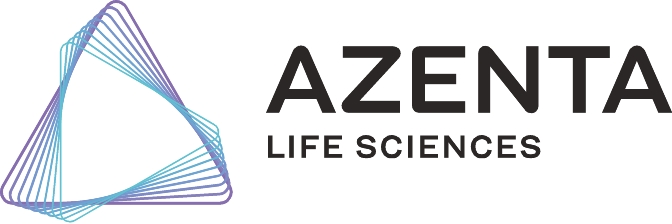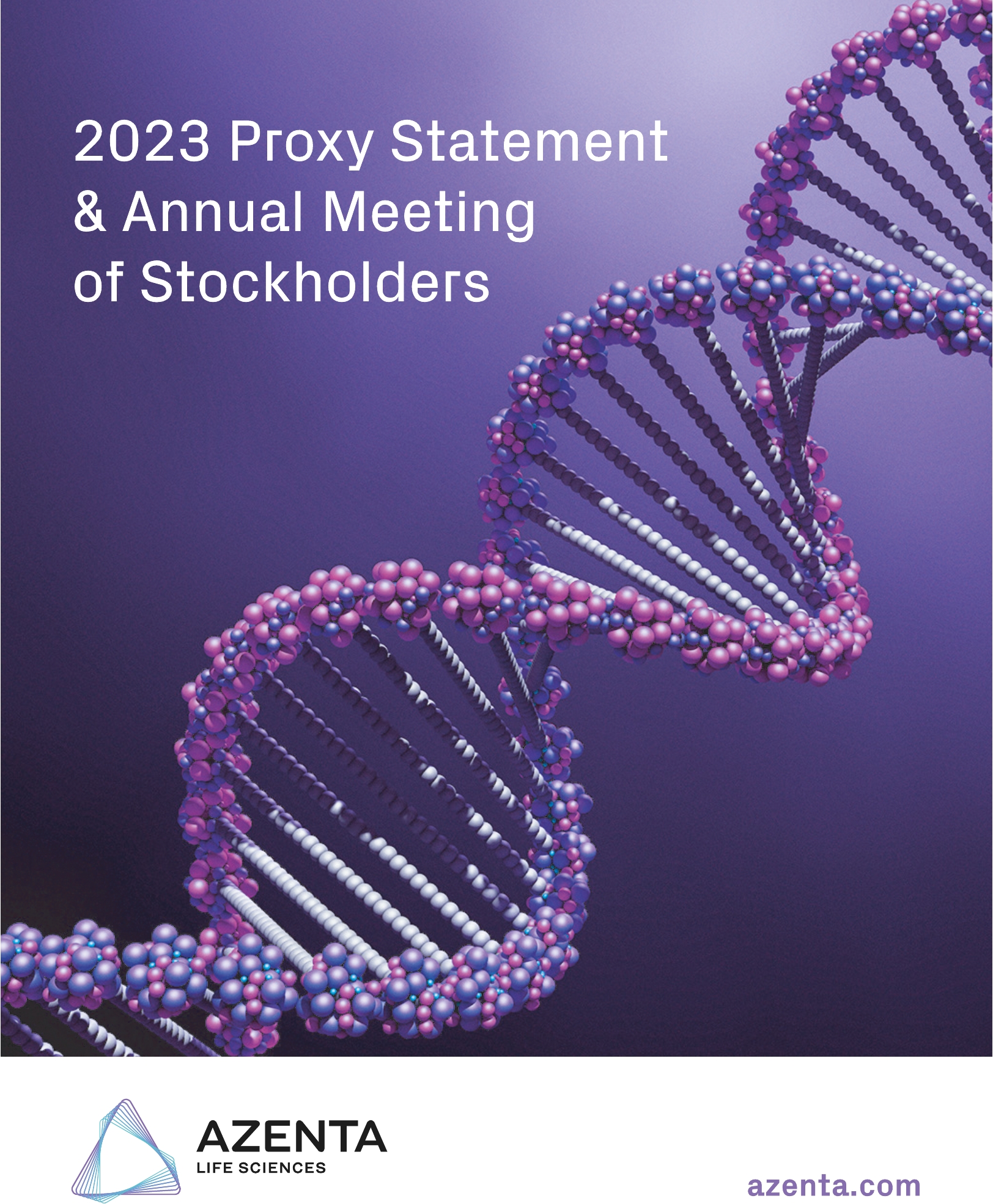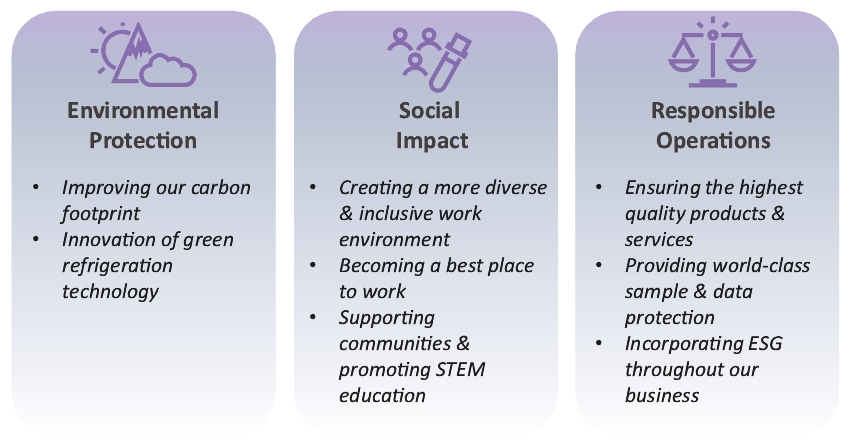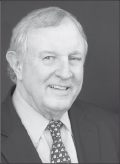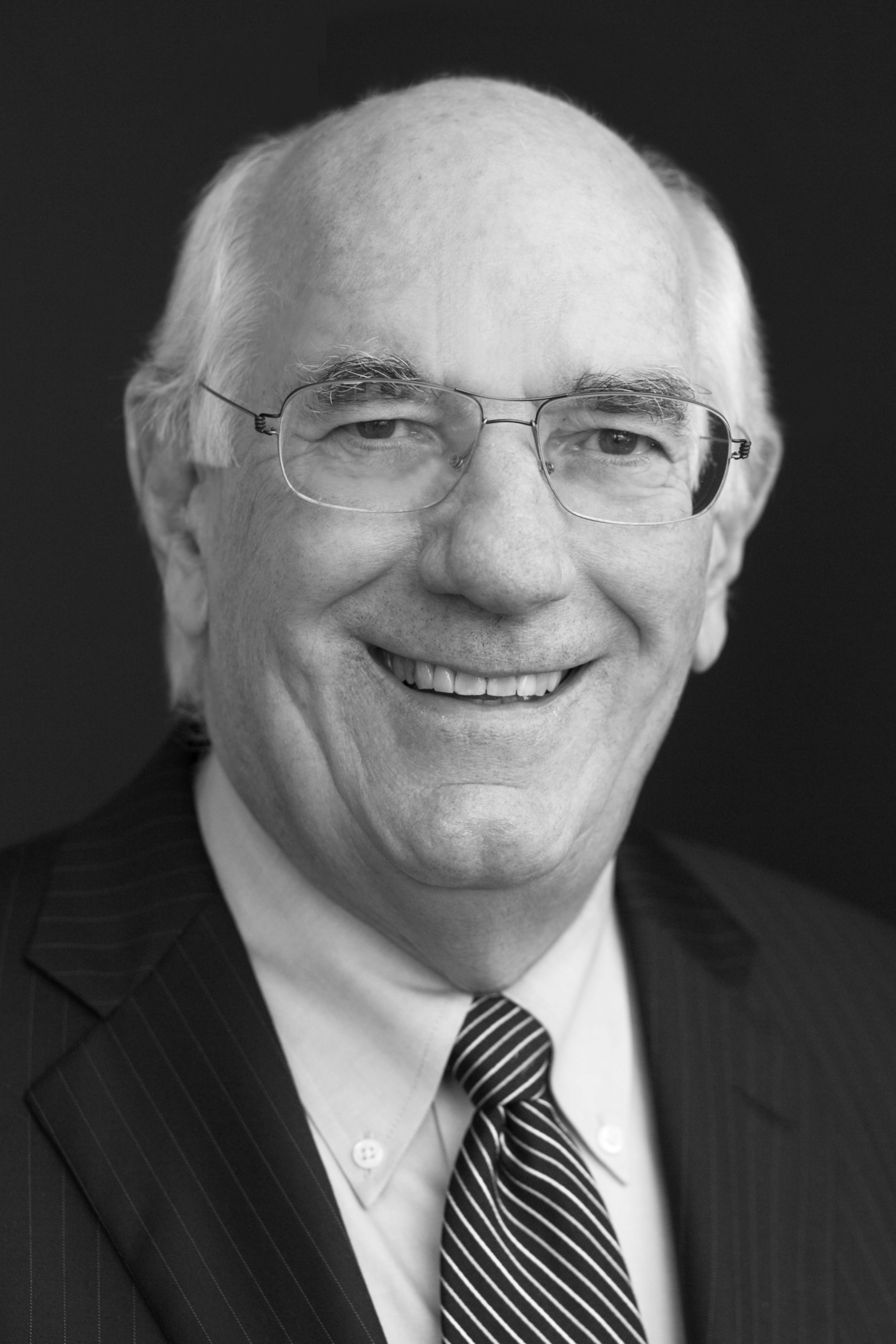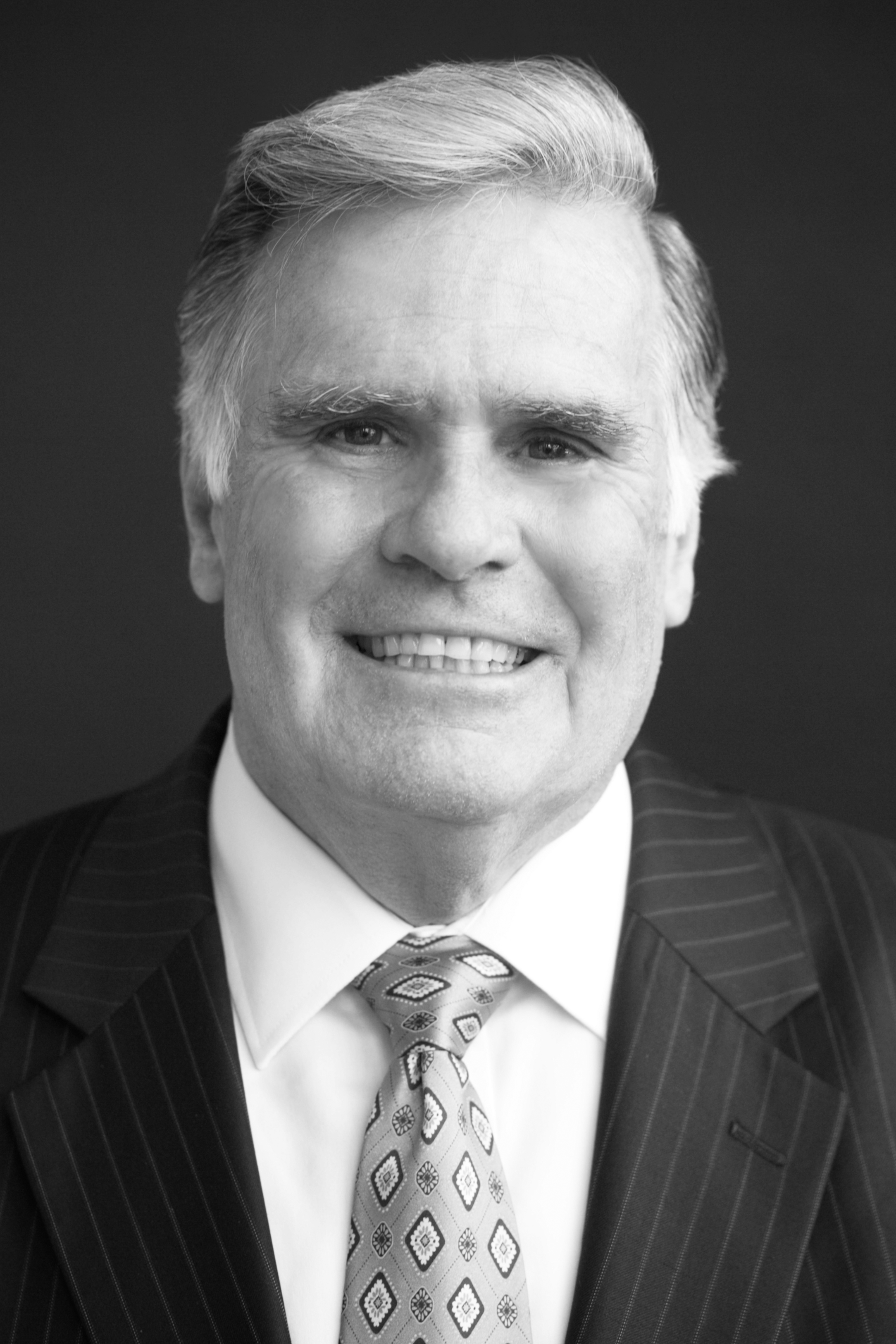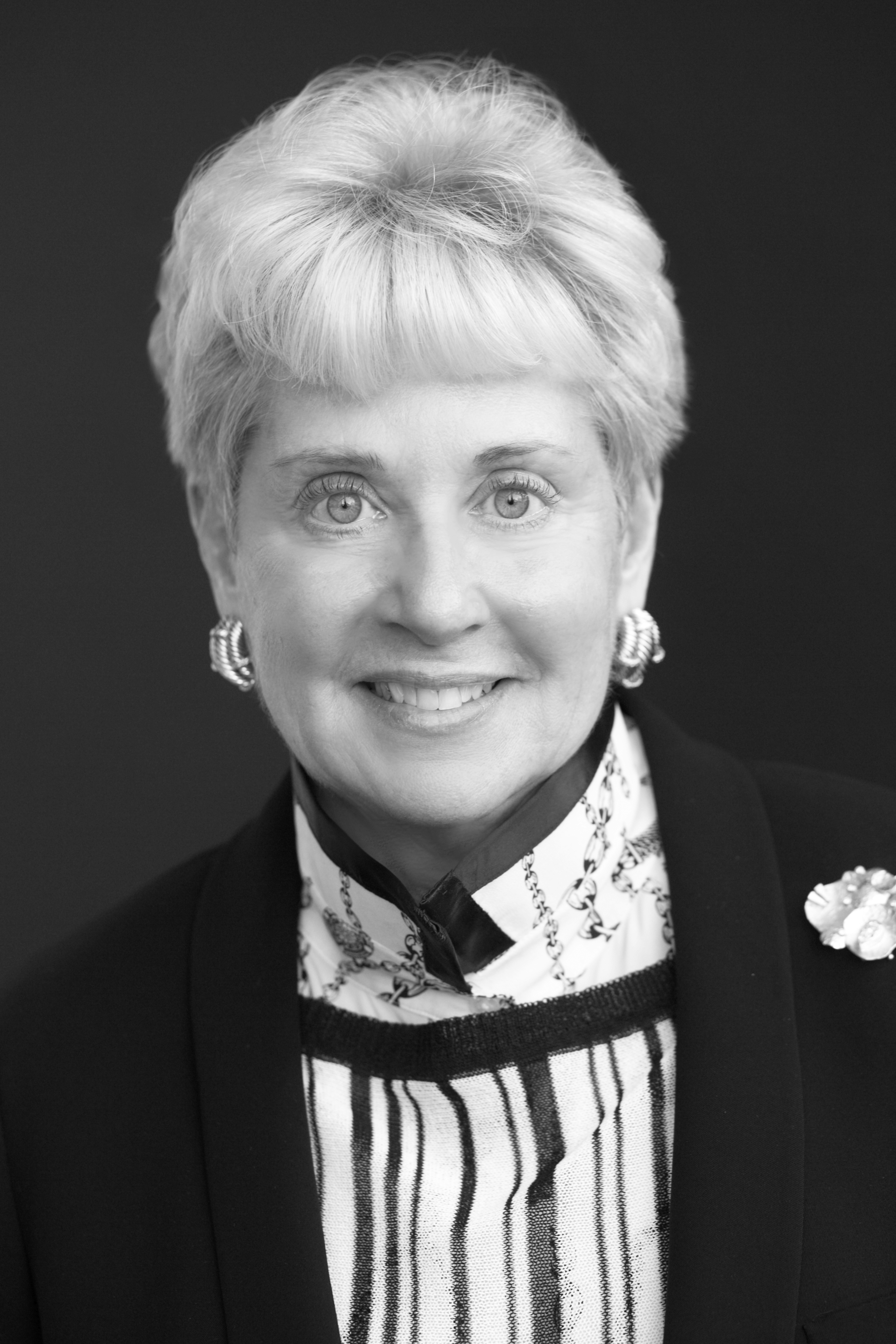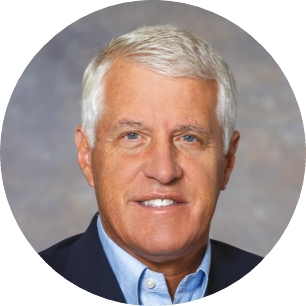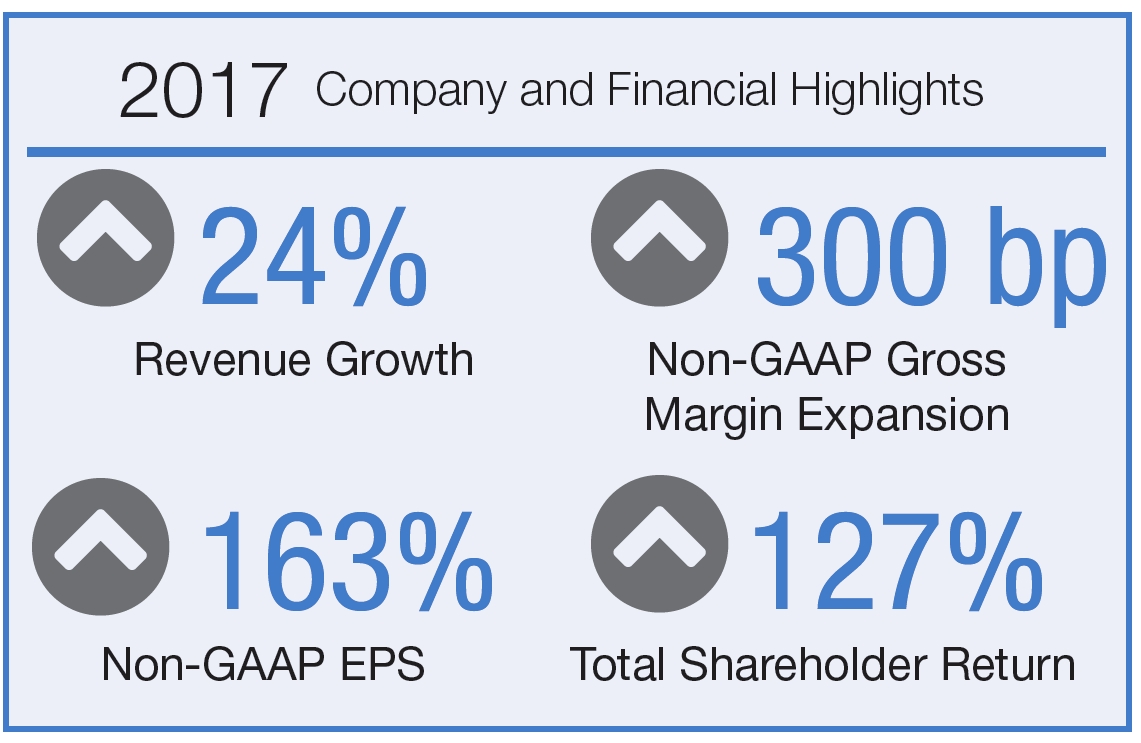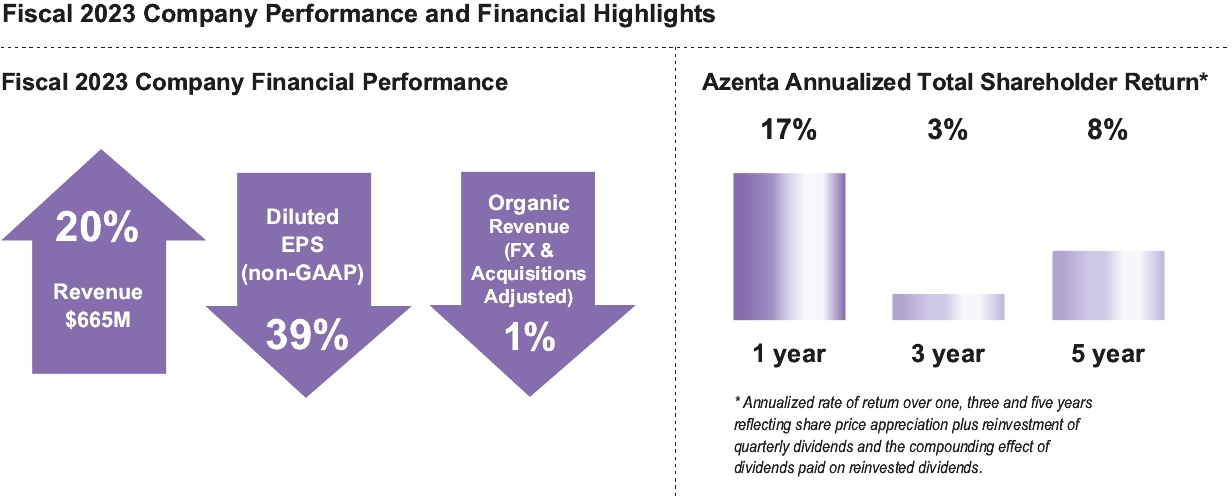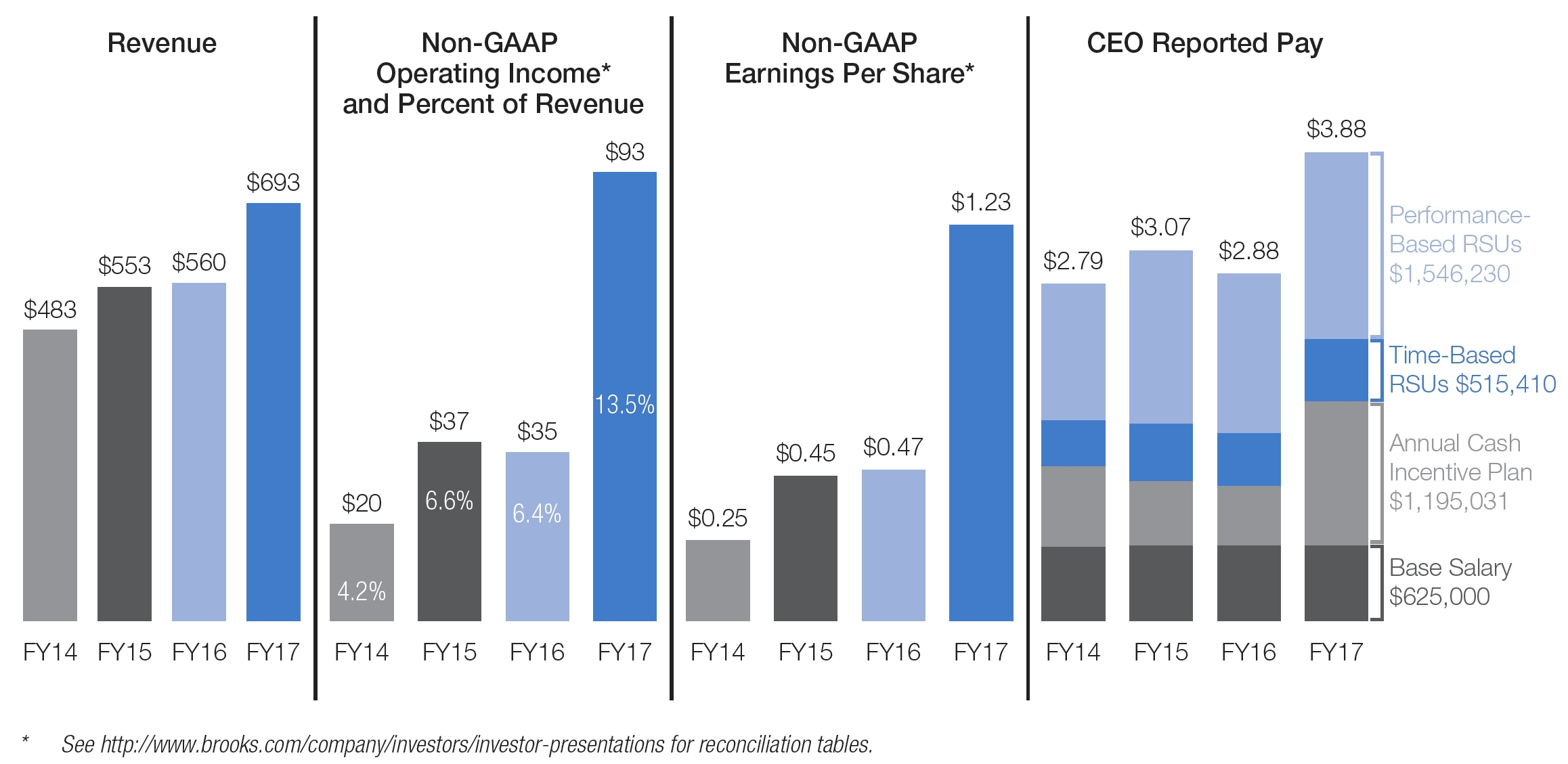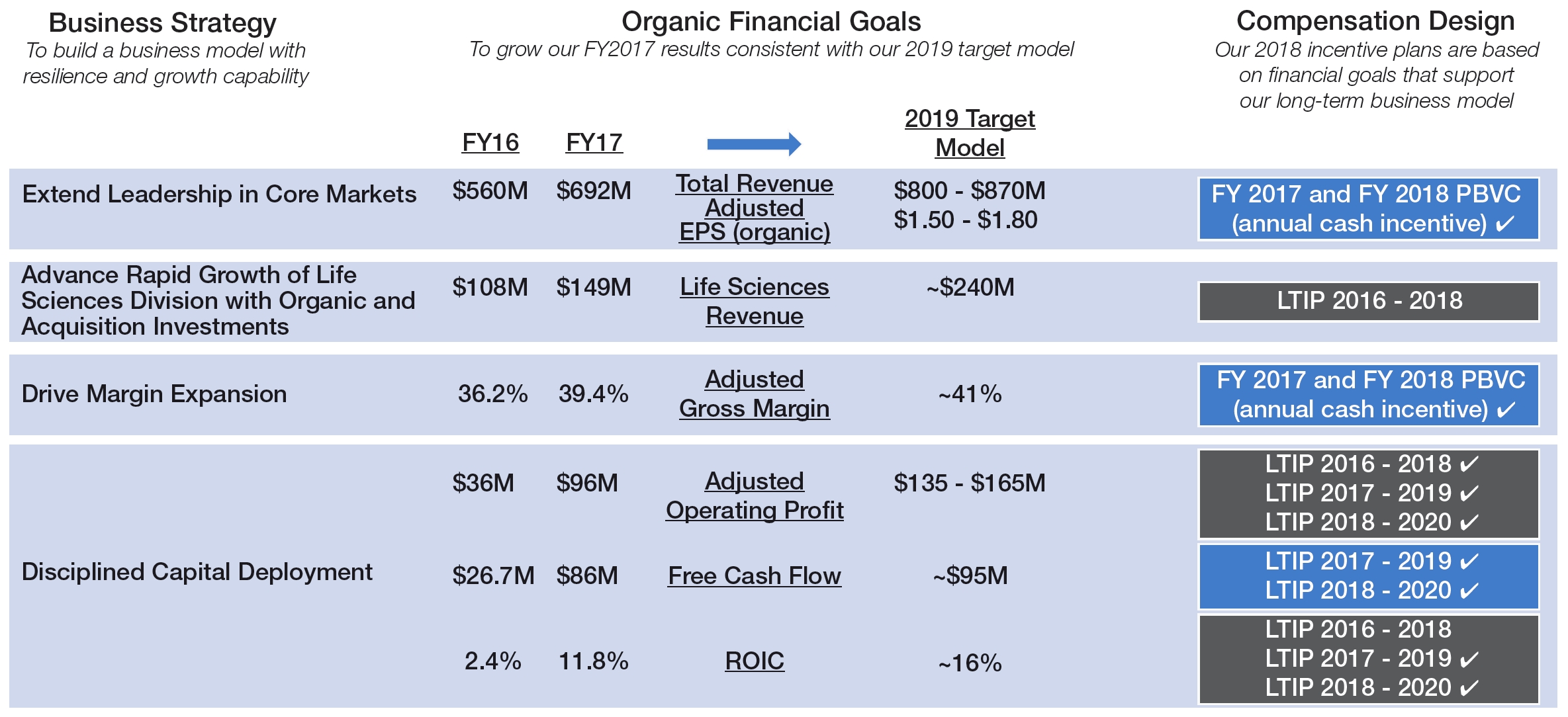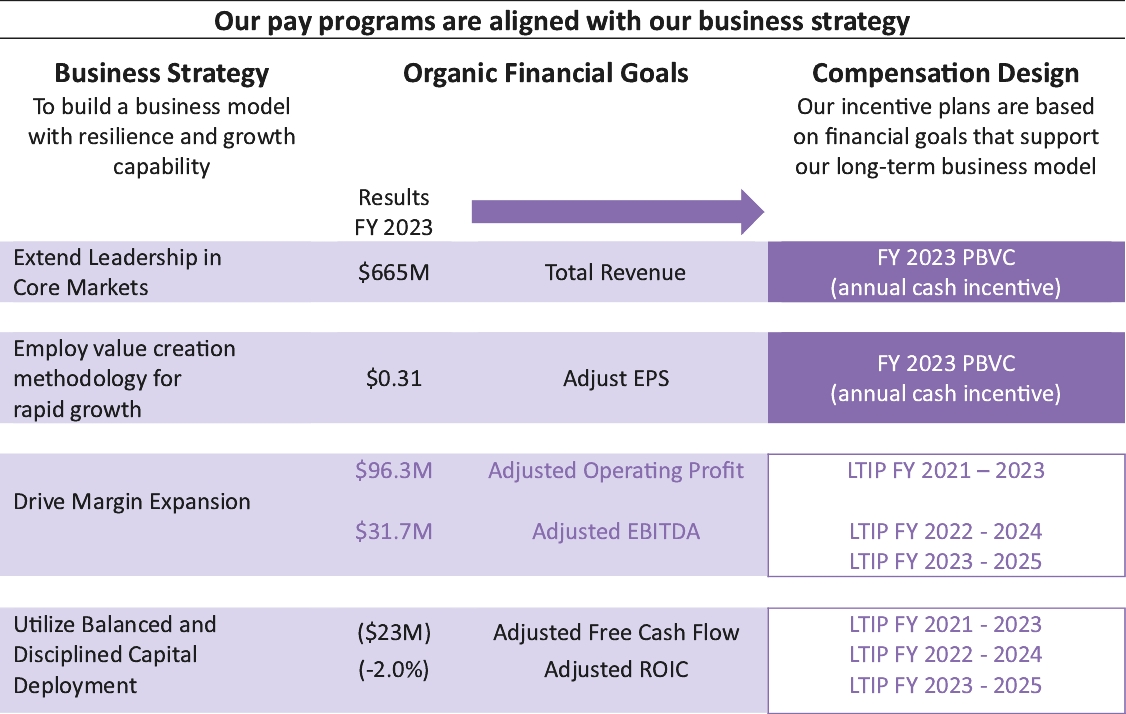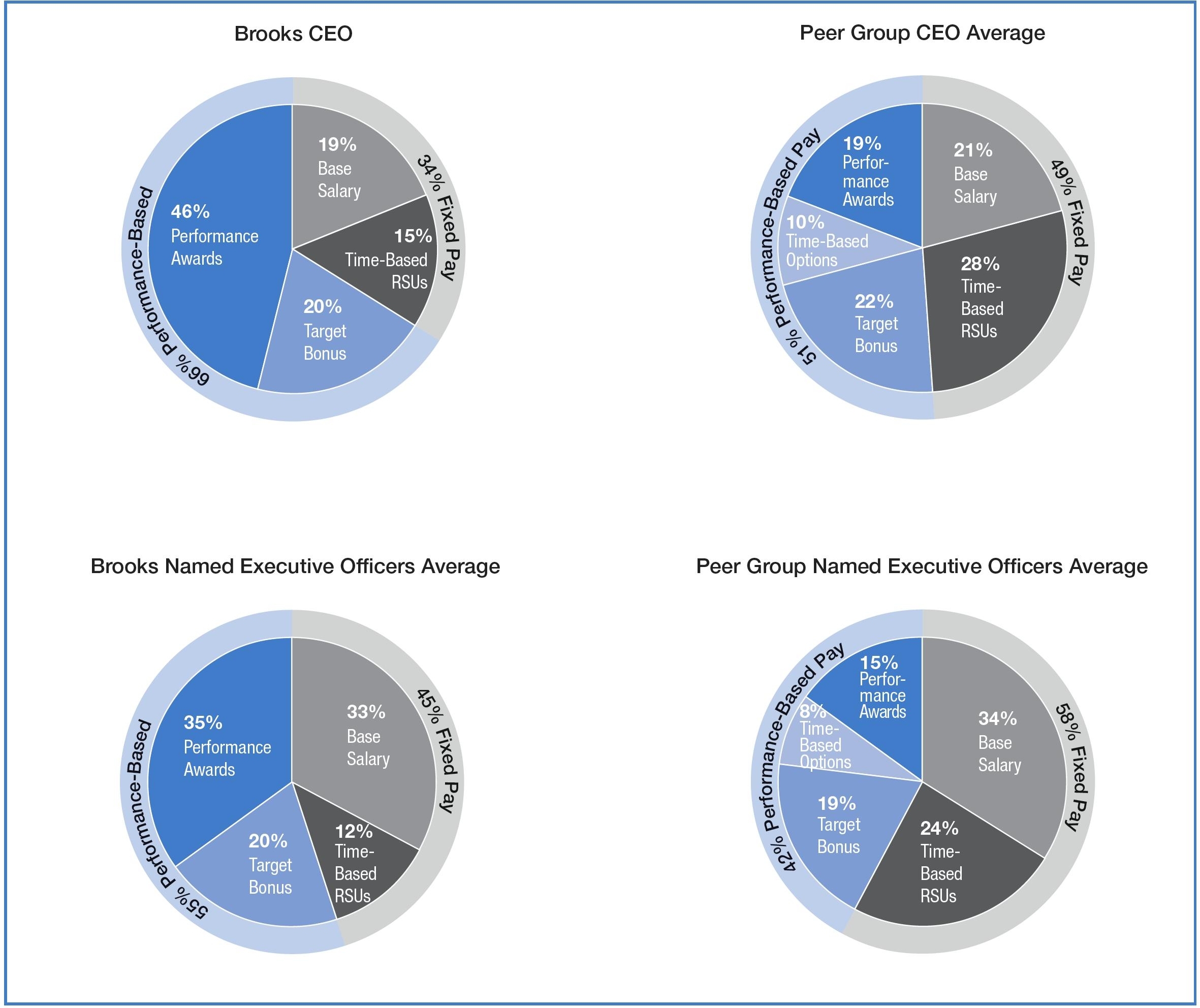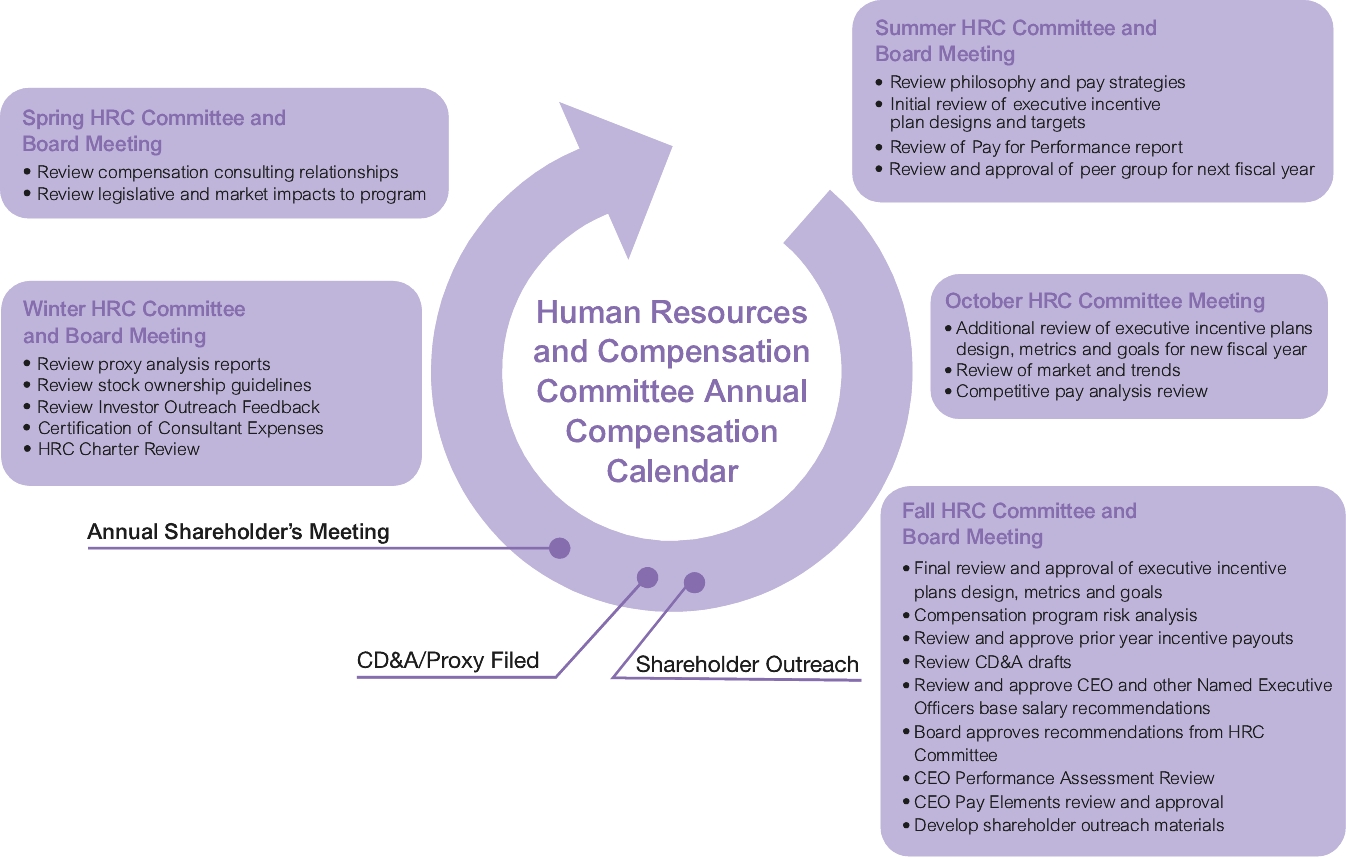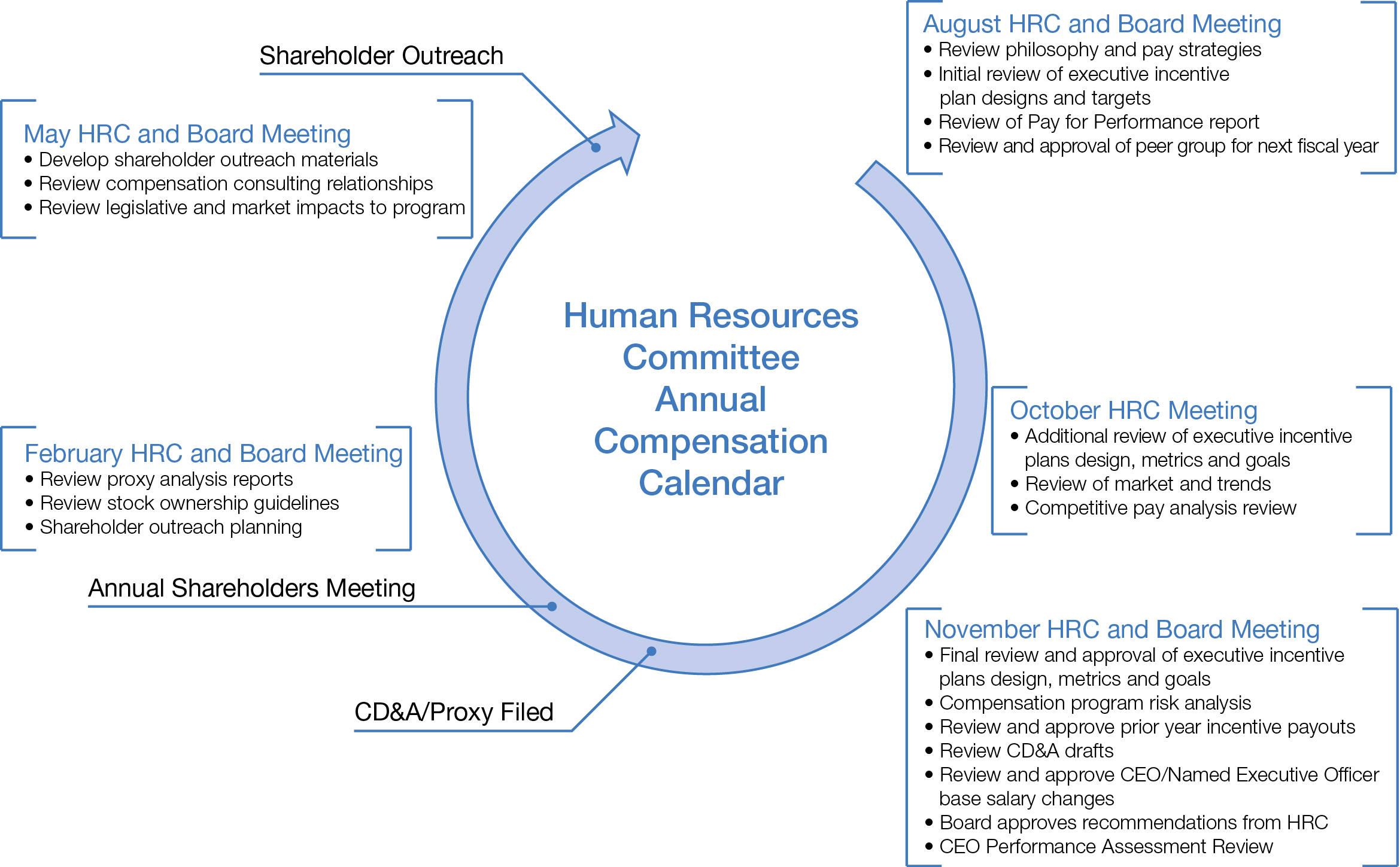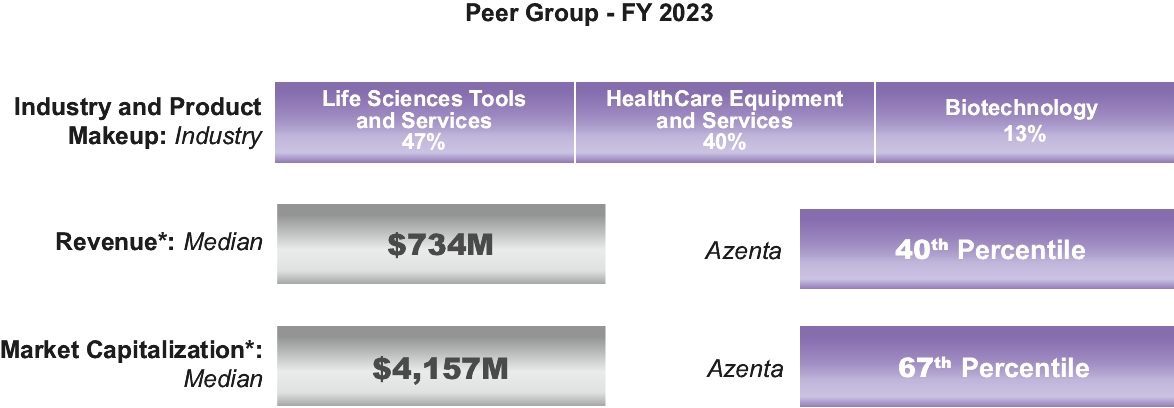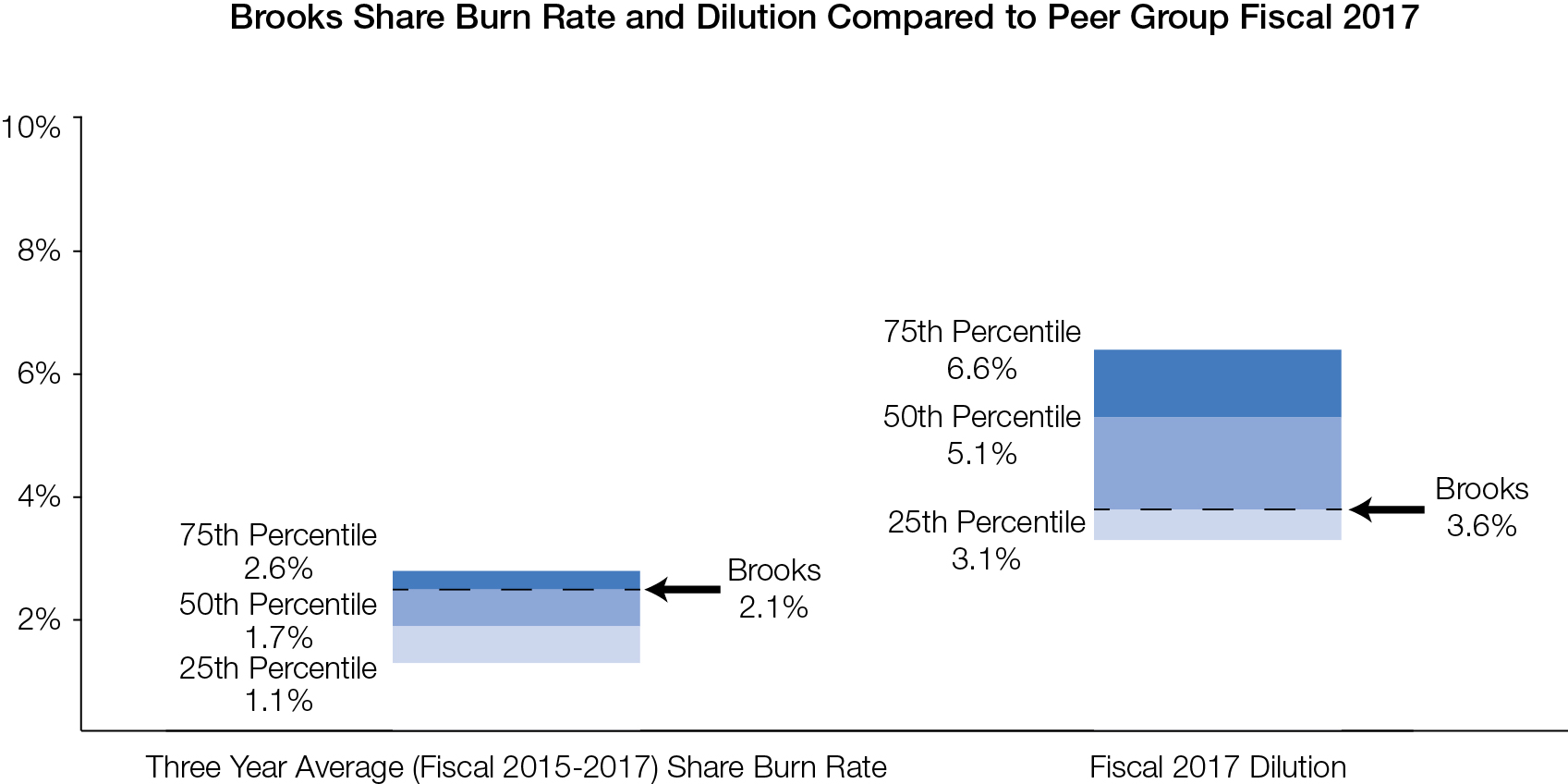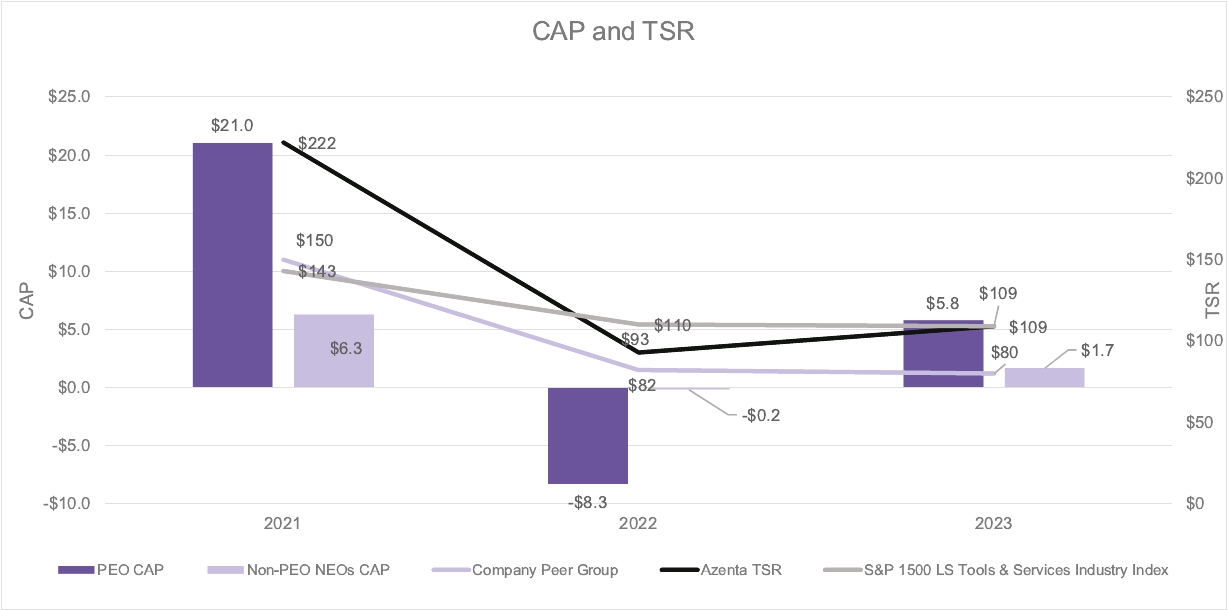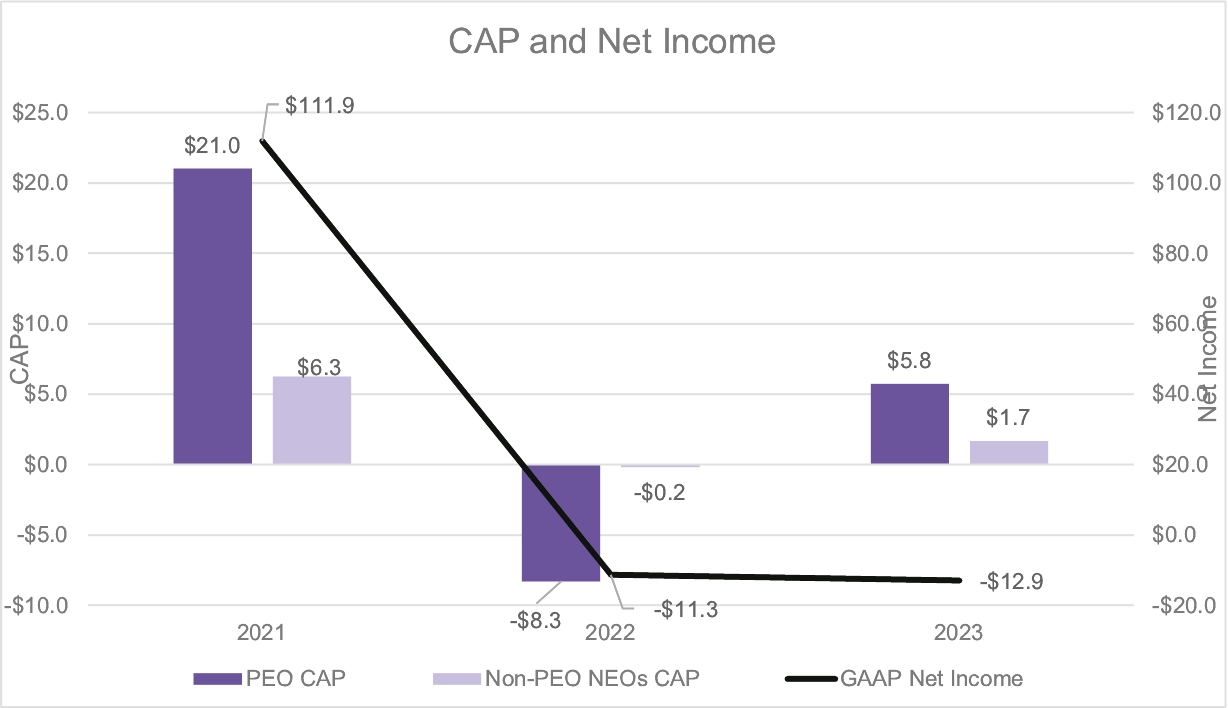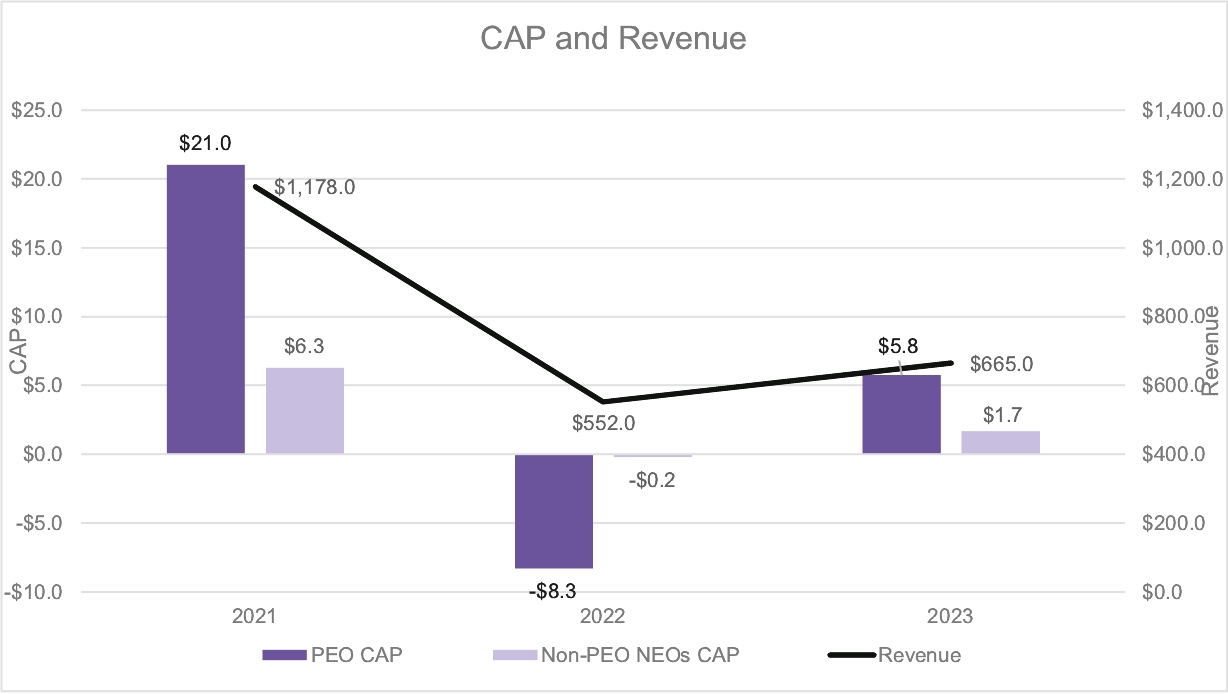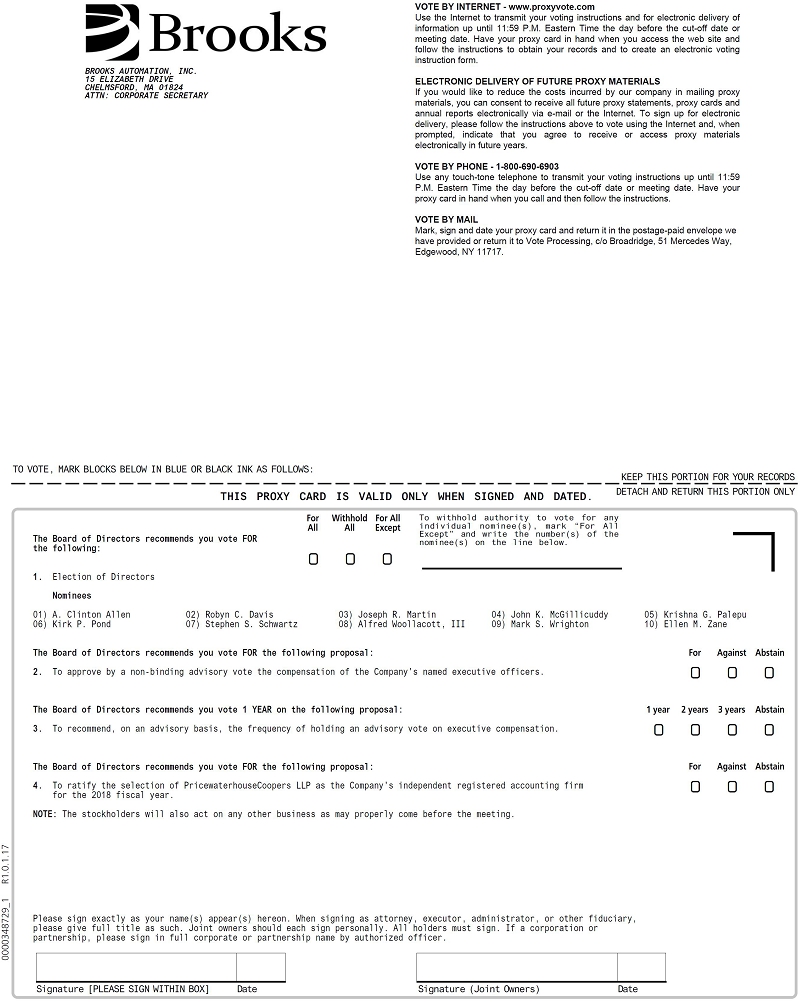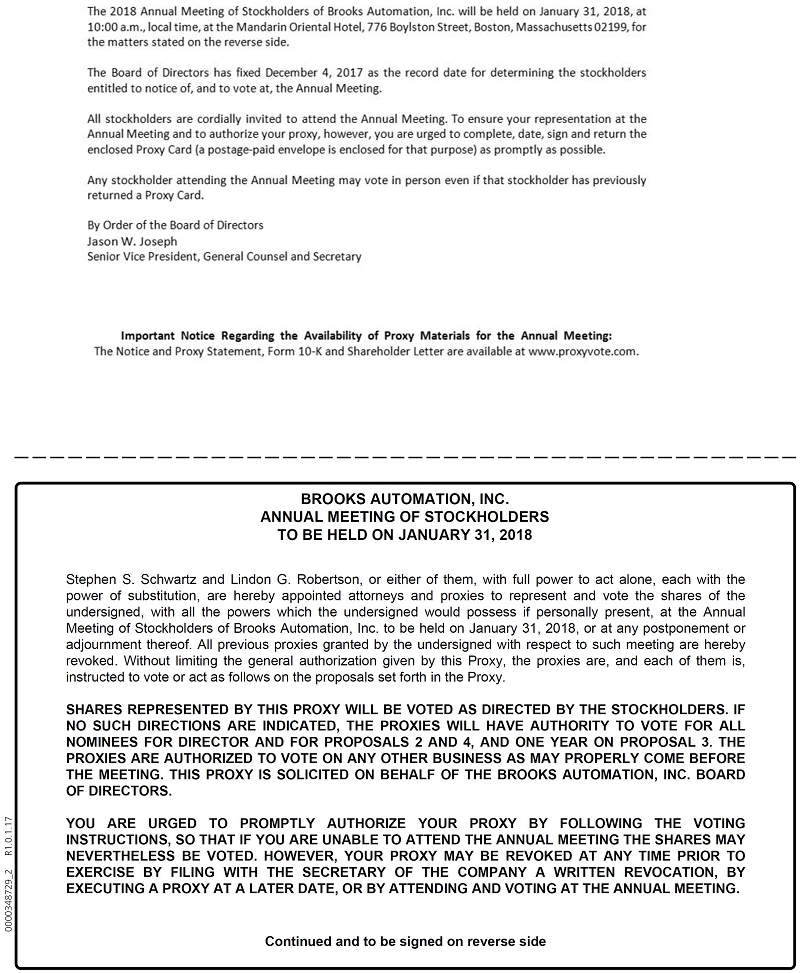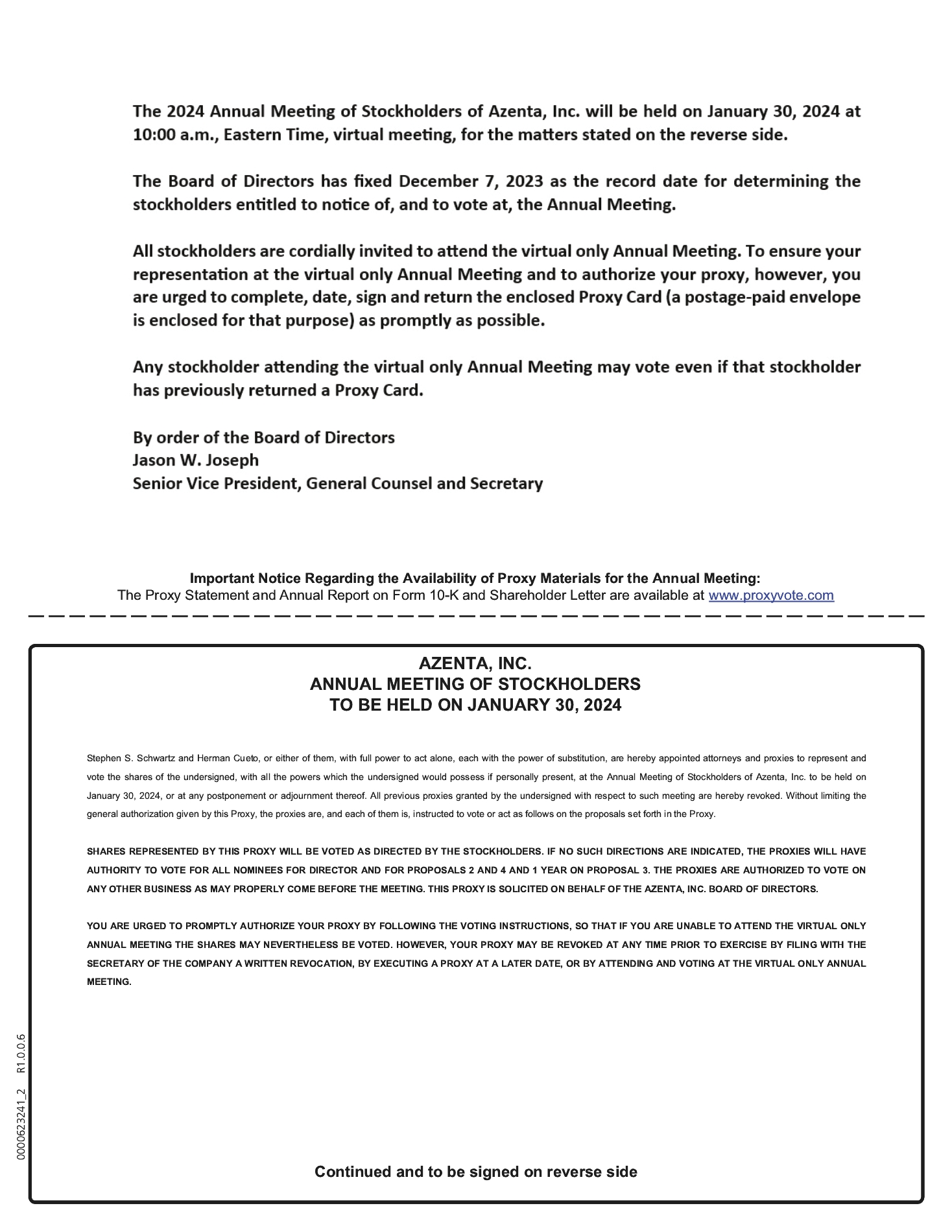TABLE OF CONTENTS
Name and Principal Position | Fiscal Year | Salary | | | Bonus | | | Stock Awards(1) | Non-Equity Incentive Plan Compensation(2) | | All Other Compensation | | Total |
Stephen S. Schwartz | 2017 | $ | 625,000 | | $ | | | $ | 2,061,640 | $ | 1,195,031 | | $ | 12,150 | (3) | $ | 3,893,821 |
President and
| 2016 | $ | 625,000 | | $ | | | $ | 1,760,800 | $ | 490,625 | | $ | 12,375 |
| $ | 2,888,800 |
Chief Executive Officer | 2015 | $ | 625,000 | | $ | | | $ | 1,910,400 | $ | 531,750 | | $ | 13,850 | | $ | 3,081,000 |
Lindon G. Robertson | 2017 | $ | 436,250 | (9) | $ | | | $ | 908,236 | $ | 597,575 | | $ | 12,150 | (4) | $ | 1,954,211 |
Executive Vice President | 2016 | $ | 425,000 | | $ | | | $ | 795,200 | $ | 314,500 | | $ | 113,462 |
| $ | 1,648,163 |
& Chief Financial Officer | 2015 | $ | 425,000 | | $ | | | $ | 895,500 | $ | 361,250 | | $ | 76,831 | | $ | 1,758,581 |
Maurice H. Tenney III | 2017 | $ | 432,500 | (10) | $ | 100,000 | (5) | $ | 891,520 | $ | 236,485 | | $ | 12,150 | (6) | $ | 1,672,655 |
President, Brooks | 2016 | $ | 425,000 | | $ | | | $ | 908,800 | $ | 214,917 | | $ | 108,223 |
| $ | 1,656,941 |
Life Sciences | 2015 | $ | 375,962 | | $ | | | $ | 2,094,500 | $ | 102,215 | | $ | 12,797 | | $ | 2,585,474 |
David E. Jarzynka | 2017 | $ | 346,250 | (11) | $ | | | $ | 626,850 | $ | 359,641 | | $ | 12,719 | | $ | 1,345,460 |
Senior Vice President | 2016 | $ | 319,192 | | $ | | | $ | 798,300 | $ | 188,044 | | $ | 12,802 | (7) | $ | 1,318,338 |
Brooks Semiconductor | | | | | | | | | | | | | | | | | |
Solutions Group | | | | | | | | | | | | | | | | | |
David C. Gray | 2017 | $ | 350,000 | | $ | | | $ | 487,550 | $ | 287,658 | | $ | 12,115 | | $ | 1,137,323 |
Senior Vice President, | 2016 | $ | 350,000 | | $ | | | $ | 511,200 | $ | 157,500 | | $ | 11,960 | (8) | $ | 1,030,660 |
Chief Strategy and New Business Officer | 2015 | $ | 350,000 | | $ | | | $ | 501,480 | $ | 178,500 | | $ | 21,133 | | $ | 1,051,113 |
(1) Awards consist of restricted stock unit (RSU) awards. In November 2016, the Board issued both time-based and performance-based RSUs under our Fiscal Year 2017-2019 Long-Term Incentive Plan to each of the named executive officers. The value of an award is based on the fair value as of the grant date calculated in accordance with FASB ASC Topic 718 (previously FAS 123R). The grant date fair value of the performance-based RSUs assuming the maximum potential value is achieved is $3,092,460 for Dr. Schwartz; $1,362,354 for Mr. Robertson; $1,337,280 for Mr. Tenney; $940,275 for Mr. Jarzynka and $731,325 for Dr. Gray. (2) Amounts consist of cash incentive compensation awards earned for services rendered in the relevant fiscal year under the Company’s executive performance-based variable compensation plan. (3) Represents amounts paid or accrued by the Company on behalf of Dr. Schwartz as follows: $12,150 in matching contributions to Dr. Schwartz’s account under the Company’s qualified 401(k) plan. (4) Represents amounts paid or accrued by the company on behalf of Mr. Robertson as follows: $12,150 in matching contributions to Mr. Robertson’s account under the Company’s qualified 401k plan. (5) Amount consists of a special, discretionary, one-time bonus paid to Mr. Tenney. (6) Represents amounts paid or accrued by the company on behalf of Mr. Tenney as follows: $12,150 in matching contributions to Mr. Tenney’s account under the Company’s qualified 401k plan. (7) Represents amounts paid by the Company on behalf of Mr. Jarzynka as follows: $12,719 in matching contributions to Mr. Jarzynka’s account under the Company’s qualified 401(k) plan. (8) Represents amounts paid by the Company on behalf of Dr. Gray as follows: $12,115 in matching contributions to Dr. Gray’s account under the Company’s qualified 401(k) plan. (9) Mr. Robertson’s base pay was increased from $425,000 to $440,000 effective January 1, 2017. (10) Mr. Tenney’s base pay was increased from $425,000 to $435,000 effective January 1, 2017. (11) Mr. Jarzynka’s base pay was increased from $335,000 to $350,000 effective January 1, 2017. |
COMPENSATION TABLES FOR NAMED EXECUTIVE OFFICERS
BROOKS AUTOMATION - 2018 Proxy Statement44
Fiscal Year 20172023
During the fiscal year ended September 30, 20172023, the following plan basedplan-based awards were granted to the named executive officers:
| | | Estimated Future Payouts
Under Non-Equity
Incentive Plan Awards(1) | Estimated Future Payouts
Under Equity Incentive
Plan Awards | All Other
Stock Awards: Number of Shares of Stock or Units (#) | | | |
Name | Grant Date | Target
($) | Maximum
($) | | Threshold
(#) | Target
(#) | | Maximum
(#) | Grant Date
Fair Value of Stock Awards
($) |
Stephen S. Schwartz | | | $ | 687,500 | $ | 1,250,000 | | | | | | | | | |
| 11/09/2016 | (2) | | | | | | | | | | 37,000 | | $ | 515,410 |
| 11/09/2016 | (3) | | | | | | 27,750 | 111,000 | | 222,000 | | | $ | 1,546,230 |
Lindon G. Robertson | | | $ | 440,000 | $ | 616,000 | | | | | | | | | |
| 11/09/2016 | (2) | | | | | | | | | | 16,300 | | $ | 227,059 |
| 11/09/2016 | (3) | | | | | | 12,225 | 48,900 | | 97,800 | | | $ | 681,177 |
Maurice H. Tenney III | | | $ | 326,250 | $ | 456,750 | | | | | | | | | |
| 11/09/2016 | (2) | | | | | | | | | | 16,000 | | $ | 222,880 |
| 11/09/2016 | (3) | | | | | | 12,000 | 48,000 | | 96,000 | | | $ | 668,640 |
David E. Jarzynka | | | $ | 262,500 | $ | 367,500 | | | | | | | | | |
| 11/09/2016 | (2) | | | | | | | | | | 11,250 | | $ | 156,713 |
| 11/09/2016 | (3) | | | | | | 8,438 | 33,750 | | 67,500 | | | $ | 470,138 |
David C. Gray | | | $ | 210,000 | $ | 294,000 | | | | | | | | | |
| 11/04/2015 | (2) | | | | | | | | | | 8,750 | | $ | 121,888 |
| 11/04/2015 | (3) | | | | | | 6,563 | 26,250 | | 52,500 | | | $ | 365,663 |
(1) These grants were made pursuant to a performance-based variable compensation framework for fiscal year 2017 and reflect the target and maximum payouts with respect to fiscal year 2017. Payouts at less than target may be awarded if a threshold level of achievement (less than target achievement) of each performance metric is reached. (2) Amount shown is the number of time-based RSUs awarded on November 9, 2016. The RSUs will vest at a rate of one-third of the grant per year on November 15, 2017, November 15, 2018 and November 15, 2019. (3) Amount shown is the number of performance-based RSUs awarded on November 9, 2016 that may be earned, in part or in full, based on achieving certain three-year performance targets for the period ending September 30, 2019 and reflect threshold, target and maximum number of RSUs eligible to be earned. Any earned RSUs will vest at the end of the three-year period at the later of date of determination by the Company’s Board of Directors of the achievement attained or November 15, 2019. |
BROOKS AUTOMATION - 2018 Proxy Statement45
Back to Contents
Under the fiscal year 2017 PBVC, participants were eligible to receive a cash bonus based on the achievement against corporate financial targets for adjusted gross margin, revenue and adjusted earnings per share, in each case for the fiscal year ended September 30, 2017, as well as non-financial individual performance goals for each named executive officer based on an assessment of each executive’s accomplishments at the conclusion of the fiscal year. Payouts for non-financial individual performance goals were predicated upon the Company first realizing a threshold level of revenue and operating income at predetermined targets. On November 8, 2017 the Company’s Board of Directors determined that the Company’s financial performance for the 2017 fiscal year, as well as each named executive officer’s achievement of individual objectives, resulted in the following percentages of target bonus being earned: 174% for Dr. Schwartz, 136% for Mr. Robertson, 73% for Mr. Tenney, 137% for Mr. Jarzynka, and 136% for Mr. Gray.
Under the 2017 - 2019 LTIP, participants were granted an award of RSUs on November 9, 2016, of which 25% vest based on the passage of time with a continuous service requirement of one-third of the grant per year on November 15, 2017, November 15, 2018 and November 15, 2019 and 75% will be earned based on the achievement of Company financial performance metrics, of which 40% will be earned based on cumulative adjusted operating profit over the three-year period, 40% will be earned based on cumulative free cash flow over the three-year period, and 20% will be earned based on average return on invested capital for the three-year period and if earned will vest on the later of the date the achievement is determined by the HRC Committee or November 15, 2018. Each financial metric is weighted and contains a minimum achievement threshold, which if not met would result in no vesting as to that metric’s weighted percentage of RSUs. If the Company’s performance exceeded the target threshold for any metric, the eligible participants could achieve up to 200% of the number of performance-based RSUs.
| | Stephen S. Schwartz | | | | | | $825,000 | | | $1,650,000 | | | | | | | | | | | | | | | | |
| | | | | 11/17/2022(2) | | | | | | | | | | | | | | | | | | 18,886 | | | $1,125,039 | |
| | | | | 11/17/2022(3) | | | | | | | | | 14,164 | | | 56,656 | | | 113,312 | | | | | | $3,374,998 | |
| | Lindon G. Robertson | | | | | | $525,000 | | | $787,500 | | | | | | | | | | | | | | | | |
| | | | | 11/17/2022(2) | | | | | | | | | | | | | | | | | | 6,296 | | | $375,053 | |
| | | | | 11/17/2022(3) | | | | | | | | | 4,721 | | | 18,885 | | | 37,770 | | | | | | $1,124,979 | |
| | Jason W. Joseph | | | | | | $280,750 | | | $421,125 | | | | | | | | | | | | | | | | |
| | | | | 11/17/2022(2) | | | | | | | | | | | | | | | | | | 3,778 | | | $225,055 | |
| | | | | 11/17/2022(3) | | | | | | | | | 2,833 | | | 11,331 | | | 22,662 | | | | | | $674,988 | |
| | Robin Vacha | | | | | | $274,500 | | | $411,750 | | | | | | | | | | | | | | | | |
| | | | | 11/17/2022(2) | | | | | | | | | | | | | | | | | | 3,778 | | | $225,055 | |
| | | | | 11/17/2022(3) | | | | | | | | | 2,833 | | | 11,331 | | | 22,662 | | | | | | $674,988 | |
| | David C. Gray | | | | | | $240,000 | | | $360,000 | | | | | | | | | | | | | | | | |
| | | | | 11/17/2022(2) | | | | | | | | | | | | | | | | | | 3,148 | | | $187,526 | |
| | | | | 11/17/2022(3) | | | | | | | | | 2,361 | | | 9,443 | | | 18,886 | | | | | | $562,520 | |
(1)
| These grants were made pursuant to a Performance-Based Variable Compensation Plan for fiscal year 2023 and reflect the target and maximum payouts with respect to fiscal year 2023. Payouts at less than target may be awarded if a threshold level of achievement (less than target achievement) of each performance metric is reached. |
(2)
| Amount shown is the number of time-based RSUs awarded on November 17, 2022. The RSUs will vest at a rate of one-third of the grant per year on November 15, 2023, November 15, 2024, and November 15, 2025. |
(3)
| Amount shown is the number of performance-based RSUs awarded on November 17, 2022 that may be earned, in part or in full, based on achieving certain three-year performance targets for the period ending September 30, 2025 and reflect threshold, target and maximum number of RSUs eligible to be earned. Any earned RSUs will vest at the end of the three-year period at the later of the date of determination by the Company’s Board of Directors of the achievement attained on November 15, 2025. |
A discussion of the material terms of the named executive officers’ employment arrangements can be found in the Compensation Discussion and Analysis included elsewhere in this proxy statement.
BROOKS AUTOMATION - 2018 Proxy Statement46
Back to ContentsTABLE OF CONTENTS
COMPENSATION TABLES FOR NAMED EXECUTIVE OFFICERS
Outstanding Equity Awards at Fiscal Year End Table
Fiscal Year 20172023
The following table sets forth certain information concerning outstanding equity awards for each named executive officer as of September 30, 2017.2023. There is no information regarding stock options because none of the named executive officers have been granted any stock options.
| Stock Awards |
Name | Number of
Shares or Units of Stock That Have
Not Vested (#) | | Market Value of Shares or Units of Stock That Have Not Vested ($)(10) | Number of Equity Incentive Plan Awards; Number
of Unearned Shares, Units
or Other Rights That
Have Not Vested (#) | | Equity Incentive Plan
Awards: Market or Payout Value of Unearned Shares, Units or Other Rights That
Have Not Vested ($) |
Stephen S. Schwartz | 13,336 | (1) | $ | 404,881 | | | | |
| | | | | 48,000 | (2) | $ | 1,457,280 |
| 25,834 | (3) | $ | 784,320 | | | | |
| | | | | 116,250 | (4) | $ | 3,529,350 |
| 37,000 | (5) | $ | 1,123,320 | | | | |
| | | | | 111,000 | (6) | $ | 3,369,960 |
Lindon G. Robertson | 6,251 | (1) | $ | 189,780 | | | | |
| | | | | 22,500 | (2) | $ | 683,100 |
| 11,667 | (3) | $ | 354,210 | | | | |
| | | | | 52,500 | (4) | $ | 1,593,900 |
| 16,300 | (5) | $ | 494,868 | | | | |
| | | | | 48,900 | (6) | $ | 1,484,604 |
Maurice H. Tenney III | 25,000 | (7) | $ | 759,000 | | | | |
| 6,251 | (1) | $ | 189,780 | | | | |
| | | | | 22,500 | (2) | $ | 683,100 |
| 13,334 | (3) | $ | 404,820 | | | | |
| | | | | 60,000 | (4) | $ | 1,821,600 |
| 16,000 | (5) | $ | 485,760 | | | | |
| | | | | 48,000 | (6) | $ | 1,457,280 |
David E. Jarzynka | 3,750 | (1) | $ | 113,850 | | | | |
| | | | | 13,500 | (2) | $ | 409,860 |
| 7,500 | (3) | $ | 227,700 | | | | |
| | | | | 33,750 | (4) | $ | 1,024,650 |
| 11,250 | (5) | $ | 341,550 | | | | |
| | | | | 33,750 | (6) | $ | 1,024,650 |
| 12,000 | (7) | $ | 364,320 | | | | |
| | | | | 12,000 | (9) | $ | 364,320 |
David C. Gray | 3,500 | (1) | $ | 106,260 | | | | |
| | | | | 12,600 | (2) | $ | 382,536 |
| 7,500 | (3) | $ | 227,700 | | | | |
| | | | | 33,750 | (4) | $ | 1,024,650 |
| 8,750 | (5) | $ | 265,650 | | | | |
| | | | | 26,250 | (6) | $ | 796,950 |
(1) The unvested units consist of RSUs granted on November 5, 2014, which vest on November 5, 2017. (2) The unvested units consist of RSUs granted on November 5, 2014 that will be earned and vest based on achieving certain performance targets measured over the three-year period ending September 30, 2017. On November 7, 2017, the Human Resources and Compensation Committee determined that the Company’s financial performance over this period resulted in 104.63% or 124,612 shares of the RSUs being earned and vested. (3) The unvested units consist of RSUs granted on November 4, 2015, which vest in two equal installments on November 4, 2017 and on November 4, 2018. |
BROOKS AUTOMATION - 2018 Proxy Statement47
Back to Contents
| | Stephen S. Schwartz | | | 3,650 (2) | | | $183,194 | | | | | | | |
| | | | | | | | | | | 38,328(3) | | | $1,923,682 | |
| | | | | 5,098(4) | | | $255,869 | | | | | | | |
| | | | | | | | | | | 22,944(5) | | | $1,151,559 | |
| | | | | 18,886(6) | | | $947,888 | | | | | | | |
| | | | | | | | | | | 56,656(7) | | | $2,843,565 | |
| | Lindon G. Robertson | | | 1,399(2) | | | $70,216 | | | | | | | |
| | | | | | | | | | | 14,693(3) | | | $737,442 | |
| | | | | 1,893(4) | | | $95,010 | | | | | | | |
| | | | | | | | | | | 8,523(3) | | | $427,769 | |
| | | | | 6,296(6) | | | $315,996 | | | | | | | |
| | | | | | | | | | | 18,885(7) | | | $947,838 | |
| | Jason W. Joseph | | | 790(2) | | | $39,650 | | | | | | | |
| | | | | | | | | | | 8,305(3) | | | $416,828 | |
| | | | | 1,092(4) | | | $54,807 | | | | | | | |
| | | | | | | | | | | 4,917(5) | | | $246,784 | |
| | | | | 3,778(6) | | | $189,618 | | | | | | | |
| | | | | | | | | | | 11,331(7) | | | $568,703 | |
| | Robin Vacha | | | 912(2) | | | $45,773 | | | | | | | |
| | | | | | | | | | | 9,583(3) | | | $480,971 | |
| | | | | 1,165(4) | | | $58,471 | | | | | | | |
| | | | | | | | | | | 5,245(5) | | | $263,247 | |
| | | | | 3,778(6) | | | $189,618 | | | | | | | |
| | | | | | | | | | | 11,331(7) | | | $568,703 | |
| | David C. Gray | | | 638(2) | | | $32,021 | | | | | | | |
| | | | | | | | | | | 6,708(3) | | | $336,675 | |
| | | | | 946(4) | | | $47,480 | | | | | | | |
| | | | | | | | | | | 4,262(5) | | | $213,910 | |
| | | | | 3,148(6) | | | $157,998 | | | | | | | |
| | | | | | | | | | | 9,443(7) | | | $473,944 | |
(1)
| The market value is calculated using the closing market price of our Common Stock ($50.19) on September 30, 2023, the last business day of the fiscal year. Except as otherwise noted, all performance-based awards are valued at target. |
(2)
| The unvested units consist of RSUs granted on November 4, 201513, 2020, which vested on November 15, 2023. |
(3)
| The units consist of RSUs granted on November 13, 2020 that will bewere earned and vestvested based on achieving certain performance targets measured over the three-year period endingended September 30, 2018.2023. In relation to the sale of the semiconductor automation business to Thomas H. Lee Partners L.P., the HRC Committee and the Board approved to measure one third of this award with an achievement factor using two years of the previously approved forecast along with the one year of actual results, subject to a cap of 150% achievement. Because the calculated achievement exceeded the 150% cap, those shares were determined to be banked at 150% achievement and vested on November 15, 2023. In addition, the HRC Committee approved a new two-year LTIP covering the fiscal years 2022 and 2023 to measure performance achievement for the remaining two-thirds of the original performance share units granted under the FY2021 – FY2023 LTIP. The same metrics were used with revised goals reflecting the Life Sciences businesses only. The performance for the two year period fell below threshold resulting in 0% performance achievement. The blended result for the three year period resulted in a 50% of the total RSUs being earned and vested which amounts are reflected in the table above. |
52 AZENTA – 2023 Proxy Statement |
TABLE OF CONTENTS
COMPENSATION TABLES FOR NAMED EXECUTIVE OFFICERS
(5)
(4)
| The unvested units consist of RSUs granted on November 9, 201615, 2021, which vest in threetwo equal installments on November 15, 2017,2023 and on November 15, 2018 and November 15, 2019. |
(5)
| The unvested units consist of RSUs granted on November 9, 201615, 2021 that will be earned and vest based on achieving certain performance target measured over the three-year period ending September 30, 2019. |
(6)
| The unvested units consist of RSUs granted on November 4, 2014, the last installment of17, 2022 which vestsvest in three equal installments on November 4, 2017(8)
15, 2023, November 15, 2024 and November 15, 2025. |
(7)
| The unvested units consist of RSUs granted on May 4, 2016, which vest in two equal installments on May 4, 2018 and May 4, 2019.(9)
The unvested units consist of RSUs granted on May 4, 2016November 17, 2022 that will be earned and vest based on achieving certain performance targetstarget measured over a one-yearthe three-year period ending September 30, 2017 and vest on or about November 8, 2017 and November 8, 2018. On November 7, 2017, the Human Resources and Compensation Committee determined that the Company’s financial performance over this period resulted in 89.1% of the RSUs or 10,692 sharesbeing earned and vested.
(10)
The market value is calculated on September 29, 2017 ($30.36), the last business day of the fiscal year. All performance-based awards are valued at target, not maximum.
|
Fiscal Year 20172023
The following table sets forth certain information concerning all vesting of restricted stock units for each named executive officer during the fiscal year ended September 30, 2017.
2023. | Stock Awards |
Name | Number of Shares
Acquired on Vesting
(#) | Value Realized
on Vesting
($)(1) |
Stephen S. Schwartz | 132,402 | $ | 2,060,175 |
Lindon G. Robertson | 81,841 | $ | 1,234,446 |
Maurice H. Tenney III | 37,915 | $ | 589,957 |
David E. Jarzynka | 43,355 | $ | 739,404 |
David C. Gray | 43,257 | $ | 673,079 |
(1) The value realized equals the closing price of Common Stock on the vesting dates, multiplied by the number of shares that vested. |
| | Stephen S. Schwartz | | | 59,212 | | | $3,360,281 | |
| | Lindon G. Robertson | | | 24,610 | | | $1,396,618 | |
| | Jason W. Joseph | | | 13,354 | | | $757,840 | |
| | Robin Vacha | | | 13,582 | | | $770,779 | |
| | David C. Gray | | | 12,243 | | | $694,790 | |
(1)
| The value realized equals the closing price of our Common Stock on the vesting dates, multiplied by the number of shares that vested. |
Nonqualified Deferred Compensation
None of the Named Executive Officers participate in our Table
Fiscal Year 2023
The Company has established a nonqualified deferred compensation
plan.plan (the “NQDP”) to allow eligible executives and directors to defer a portion of their compensation on a pre-tax basis and receive tax-deferred returns on those deferrals. The NQDP is unfunded for tax purposes and for purposes of the Employee Retirement Income Security Act of 1974, as amended. An additional feature of the NQDP is a supplemental retirement plan, or SERP, in which the Company can choose to make annual contributions to selected executives’ NQDP accounts. No contributions have been made by the Company in this fiscal year.
| | Lindon G. Robertson | | | $105,452 | | | $107,600 | | | | | | $798,144 | |
| | Jason Joseph | | | $76,350 | | | $90,206 | | | | | | $839,621 | |
Drs. Schwartz and Gray and Mr. Vacha are not participants in the NQDP.
(1)
| Represents contributions to the NQDP during fiscal year 2023 |
(2)
| Represents NQDP Gains/(Losses) during fiscal year 2023 |
(3)
| Represents Withdrawals and Distributions during fiscal year 2023 |
(4)
| Represents total NQDP account balance as of September 30, 2023 |
We do not have any qualified or nonqualified defined benefit plans, other than certain plans for international employees. No named executive officer participates in any of those plans.
BROOKS AUTOMATION - 2018 Proxy Statement48








